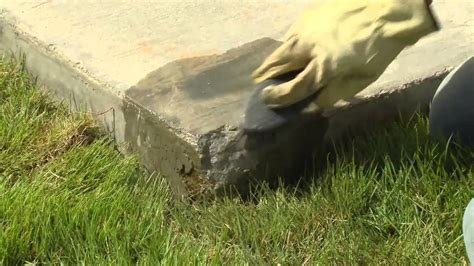Learn expert tips for repairing cracked, damaged, and hole-ridden cement in this comprehensive guide. DIY solutions for a smooth, polished finish.If you have cement surfaces around your home, you may have encountered issues such as cracks, holes, or other damage. The good news is that you can easily repair these problems yourself with the right tools and techniques. In this blog post, we will guide you through the process of repairing cracked, damaged, or hole-filled cement, so you can restore the integrity and appearance of your surfaces. We’ll cover everything from identifying the type of damage to choosing the best repair materials and methods. Whether you’re dealing with a small crack in your driveway or a larger hole in your patio, we’ve got you covered. Follow along as we explore how to tackle these common cement repair issues and get your surfaces looking as good as new.
How To Repair Cracked Cement
Cracks in cement can be unsightly and can also lead to further damage if not properly repaired. To start, use a chisel and hammer to remove any loose material from the crack. Then, clean the area with a wire brush and make sure it is free from dust and debris. Next, mix your cement patch according to the manufacturer’s instructions, and apply it to the crack using a trowel. Make sure to smooth the patch evenly and allow it to dry completely before walking or driving on it.
If the crack is especially large, you may need to use a bonding adhesive before applying the cement patch. This will help the patch adhere to the existing cement and provide extra stability. Once the patch is dry, you can then seal and waterproof the repaired area, which will help prevent future cracking and damage. By following these steps, you can repair cracked cement and ensure that your surfaces remain strong and durable for years to come.
How To Repair Holes In Cement
Repairing holes in cement can be a daunting task, but with the right tools and techniques, it can be done successfully. The first step is to clean out the hole and remove any loose debris or dirt. Use a chisel or a wire brush to clean the edges of the hole and make sure the surface is clean and smooth. Once the hole is clean, it’s important to fill it with a high-quality cement patching compound. This compound should be mixed according to the manufacturer’s instructions and applied to the hole using a trowel or putty knife.
After the patching compound has been applied, it’s important to smooth it out and make sure it is level with the surrounding cement. Once the patch has dried completely, use a fine-grit sandpaper to smooth out any rough edges and blend the patch with the rest of the cement surface. For larger holes, it may be necessary to apply multiple layers of patching compound, allowing each layer to dry before applying the next. With a little patience and attention to detail, it is possible to repair holes in cement and restore the surface to its former glory.
How To Repair Damaged Cement
When it comes to repairing damaged cement, the first step is to assess the extent of the damage. Look for cracks, holes, or areas of crumbling concrete. Once you have identified the areas that need attention, you can begin the repair process.
One common method for repairing damaged cement is to use a cement patching compound. These compounds are designed specifically for filling in cracks and holes in cement surfaces. Start by cleaning the damaged area and removing any loose debris. Then, mix the patching compound according to the manufacturer’s instructions and apply it to the damaged area using a trowel or putty knife. Smooth the surface of the patching compound and allow it to dry completely before walking or driving on it.
